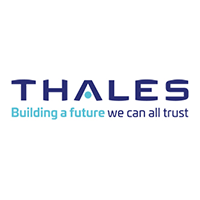 Thales | Security for What Matters Most
More About This Author >
Thales | Security for What Matters Most
More About This Author >
 Thales | Security for What Matters Most
More About This Author >
Thales | Security for What Matters Most
More About This Author >
In 2004, the first Safer Internet Day (SID) debuted by the EU SafeBorders project with a mission to make the digital world a safer space for everyone. Over the years, it has grown into a global movement, observed in over one hundred and seventy countries. Its goal remains unchanged: encouraging individuals and businesses to create an online environment that promotes safety, respect, and inclusivity.
At a time when technology is integral to our lives, SID has never been more relevant. The 2025 edition, themed “Together for a Better Internet,” is a call to action for public and private sector entities, educators, and individuals to join forces to build a secure and equitable digital future.
This Year’s Theme: Why It Matters
The 2025 theme suggests harnessing the power of collaboration to address online challenges. With an estimated 5.8 billion people using the internet worldwide, the digital landscape mirrors our societies — bursting with opportunity but not without its flaws.
This theme emphasizes that no one can tackle issues like cyberbullying, misinformation, and harmful content alone. A united effort involving legislation, technology, and education is the key to cultivating an online environment where everyone, particularly children and young people, can exercise their human rights to explore and learn without the worry of exploitation or harm.
Regulation for Safer Platforms: The Digital Services Act
One vital tool for creating a safer internet is robust legislation, such as the EU’s Digital Services Act (DSA). This act places a lot of responsibility on “gatekeeper platforms” such as Google, Amazon, and Meta. It requires them to actively limit harmful content and improve user protections. From curbing the spread of misinformation to implementing transparent algorithms, the DSA is taking critical steps to ensure that users will be held accountable for their online activities.
These measures align perfectly with the spirit of Safer Internet Day. By holding platforms to account and mandating guardrails, the DSA aims to make the internet a safer place. However, legislation is only one part of the puzzle; technological innovation and user awareness are equally important when it comes to building a safer online ecosystem.
Tackling Deepfakes and AI-Driven Threats
Artificial intelligence (AI) has driven incredible advancements but also previously unimagined challenges. One of the most concerning is deepfakes — synthetic media that mimic real people with such accuracy that they defy all but the very closest scrutiny. These tools are being weaponized for extortion, identity theft, ransomware, misinformation, and harassment.
The rise of such threats underlines the criticality of modern security measures like Multi-Factor Authentication (MFA) and identity verification. With MFA, even if one layer of security is compromised, unauthorized access is foiled because multiple forms of verification are needed. This simple but effective solution is a valuable tool for people and businesses finding their way around an increasingly AI-driven internet.
Building a safer, better internet demands more than awareness of emerging threats — it needs a proactive way to secure digital identities. By using authentication technologies, the risks posed by AI-enabled cyberattacks can be mitigated, and trust in online interactions is maintained.
Education as a Shield
While legislative frameworks and technological solutions are non-negotiables, they are incomplete without education. Young people and vulnerable users don’t always understand how to recognize and respond to online threats, making them easy targets for cyberbullying and sextortion.
Cyberbullying, a particularly insidious form of harassment, can have devastating effects on young people’s mental health. Also, sextortion — an egregious criminal act in which perpetrators coerce victims into sharing explicit content — has become an unnerving trend. Dealing with these issues needs a two-pronged approach: arming our youth with digital literacy skills and encouraging open dialogues on online safety.
Educational initiatives that teach users to recognize phishing attempts, keep their accounts safe, and report abusive and unacceptable behavior are invaluable. Parents, educators, and community leaders are at the vanguard of helping children navigate the digital world confidently and responsibly.
Safer Internet Day is a powerful reminder that education is more than just a tool for safety — it's the foundation of a respectful and inclusive online culture.
A Vision for a Safer Future
As we mark Safer Internet Day 2025, it is clear that the road to a better internet needs a collective effort. Legislation like the Digital Services Act ensures accountability, and technologies such as MFA provide robust defenses against evolving threats. Concurrently, education empowers people, particularly young ones, to protect themselves in a digital landscape in flux.
The challenges are many, but the potential for change is great. By working together — governments, businesses, educators, and individuals — we can create an internet that upholds safety, respect, and opportunity for everybody. As we celebrate this year’s theme, “Together for a Better Internet,” let it remind us of the life-changing power of collaboration.
Through shared responsibility, we can look forward to a future where the internet is not just a tool for connection but a space that reflects the best of humanity.